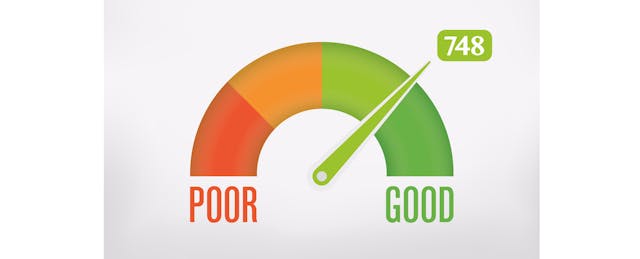The way you view your credit score is most likely a result of how good your credit is. If it’s decent, you probably don’t pay your score much attention. If it’s bad—and you’re scrambling to find an apartment in a competitive housing market (ahem, Bay Area)—it can feel like a burden, and worse, one you can’t do much about.
That’s why it might come as surprise to hear AspirEDU, an educational analytics company, pitch their Dropout Detective software as an “academic credit score” for students. The program provides a “risk index” for students based on a number of factors: homework completion, attendance, participation. But whereas credit scores are designed to prevent risky buyers from getting approved on loans, Dropout Detective is meant to improve student success and lower dropout rates.

But Chris Munzo, executive vice president of AspirEDU (and fan of metaphors), compares Dropout Detective to a gym membership—it only works if you use it. So we talked to two schools implementing the program to see if their experience has been a positive one, or if it’s drifting towards the red.
Credit scores to boost student success
Kona Jones, director of online learning at Richland Community College in Illinois, was brought on in 2008 to improve student success rates, which at the time were hovering around 65 percent—not “horrendous,” she says, but still not good enough.
After first hearing the AspirEdu pitch, Jones says she was skeptical about Dropout Detective's ability to make an impact, but a free trial in 2013 turned her into a convert. “Honestly, it blew my socks off,” she recalls. “I was getting information I had never had access to.”
That information includes a daily report of how every student at the school is performing across their classes. Dropout Detective integrates with schools’ existing learning management system (in Richland’s case, Canvas) to cull information on students’ grades, missing assignments, last date of attendance or sign on, and a slew of other data points that Munzo calls part of the “secret sauce.” This algorithm generates a “Risk Index” displayed in a red, yellow, and green—hence the credit score analogy.

Putting the data to good use
But unlike a credit score, which users can pay to see, students don’t know where they stand. Instead, administrators, instructors and advisors are meant to use the information to determine the level of risk and intervene. There’s no background context, no demographic info, just a daily score, in one of three colors.
But for Jones, that’s the beauty of Dropout Detective: it gives a quick snapshot of every student, something difficult to come by in online programs like Richland’s. “In an online course you don’t see the blank stares and it’s so easy for students to slip through the cracks,” Jones explains. “With this, I can click one button and see who’s at risk. Teachers just don’t have the time to do that.”
Jones does not work directly with students. Instead, she helps faculty and advisors use the information to get struggling students back on track. For example, if a student hasn’t been logging into their online portal or if their grades have dipped, she’ll encourage the advisors to reach out to the students via email to check-in.
She’s also created a “cheat sheet” to help advisors know how to intervene, which tips on when to reach, either by email or phone. “It’s about reaching out to the right students at the right time. Before, we were sending out blasts to the whole school rather than individuals,” she says. “Now it’s personalized; it’s targeted. That’s what really helps.”
Bumps along the road
Although Jones credits Dropout Detective with boosting student success rates by 8 percent at Richland, not every school has had such a "green” experience.
Allison O’Grady, instructional support specialist at the University of Denver, has a more mixed review. Like Jones, the majority of her students are online—around 70 percent—with advisors facing caseloads of up to 300 students.
O’Grady says “it’s hard to imagine what they did without all this data,” but she also acknowledges there have been challenges. The most significant? Training staff not to view students as single data point.
“The data doesn’t include email, webinars participation, or engagement outside of classroom,” O’Grady explains. “That makes it easier for staff to make false assumptions.” This is the flip-side of the credit score comparison: students are not numbers, but complex individuals. “We’ve worked hard to say ‘this is not the full picture,’” O’Grady explains.
But unlike a credit score, being in the red doesn’t necessarily bring negative consequences; in an ideal situation, company officials say it should simply bring the student more support and attention. But O’Grady points out that being overly cautious about students isn’t always a good thing. .
“Students can sometimes feel like there’s a Big Brother thing going on,” she says. “They can get upset if they’re reached out to before the professor updates a grade.”
O’Grady notes lower scores may also may not be students’ fault, which could create additional resentment. “If faculty aren’t updating grades on Canvas, that can quickly lower students ‘credit score,’” she explains.
Regardless, O’Grady says the program has been “effective,” strengthening relationships between students, faculty and advisors. But she says whether dropout rates have fallen remains to be seen.
In the meantime, they plan to keep tracking, and working to prevent a low score from having a longterm effect.


